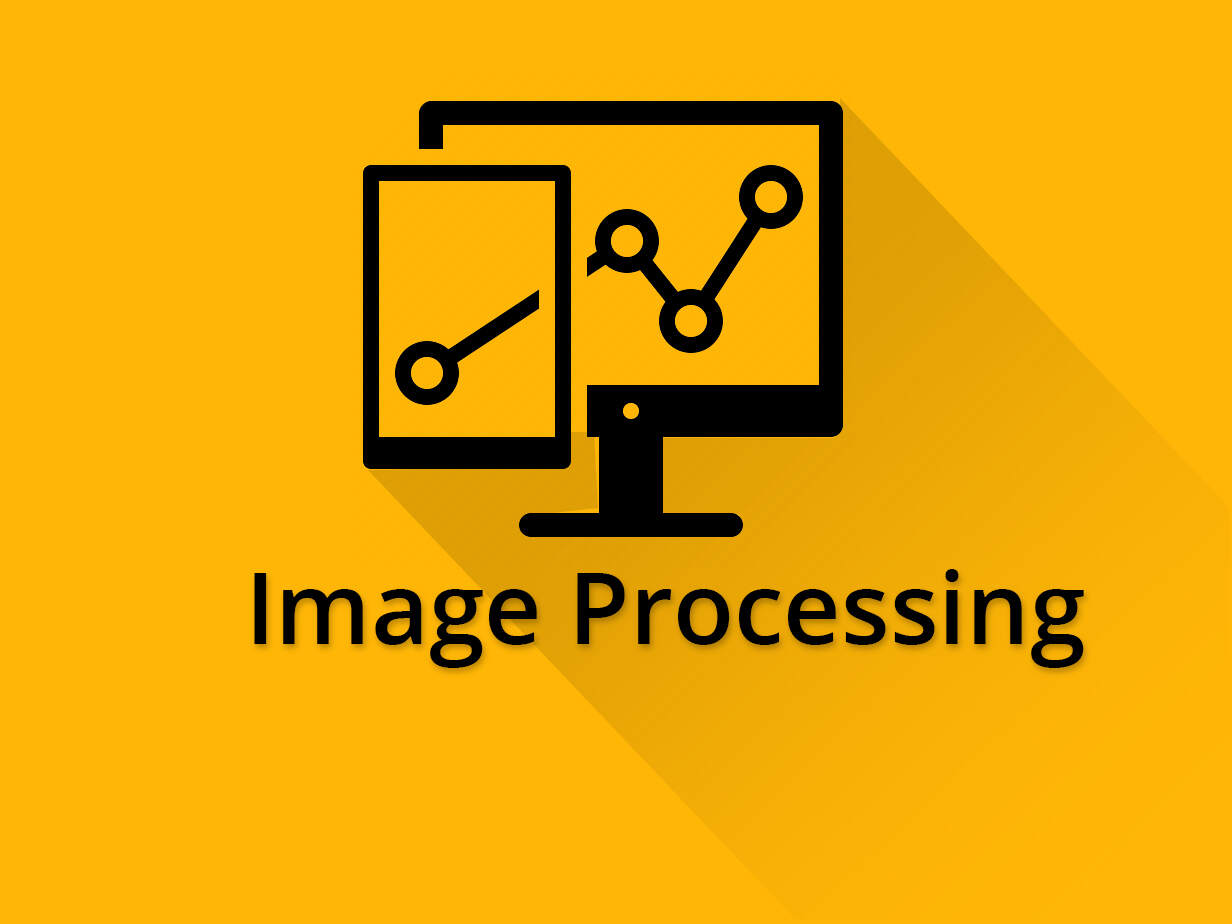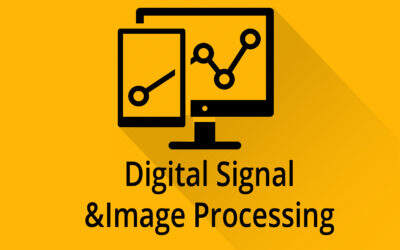Image Processing
Image Processing is the semester 5 subject of IT engineering offered by Mumbai Universities. Prerequisite for studying these subject is Mathematics and Statistics.
As images are two dimensional signals, the single dimensional Digital Signal Processing fundamentals. Course Objectives of the subject Image Processing are as follows the course will help the students to get familiar with Fundamental concepts of a digital image processing system. Concepts of image enhancement techniques. Various Image Transforms. Compression techniques and Morphological concepts. Various segmentation techniques, and object descriptors. Color models and various applications of image processing. Course Outcomes of the subject Image Processing are as follows Students should be able to remember the fundamental concepts of image processing. Explain different Image enhancement techniques. Understand and review image transforms. Analyze the basic algorithms used for image processing &image compression with morphological image processing. Contrast Image Segmentation and Representation. Design & Synthesize Color image processing and its real world applications.
Digital image processing is the use of a digital computer to process digital images through an algorithm. As a subcategory or field of digital signal processing, digital image processing has many advantages over analog image processing. It allows a much wider range of algorithms to be applied to the input data and can avoid problems such as the build-up of noise and distortion during processing. Since images are defined over two dimensions (perhaps more) digital image processing may be modeled in the form of multidimensional systems. The generation and development of digital image processing are mainly affected by three factors: first, the development of computers; second, the development of mathematics (especially the creation and improvement of discrete mathematics theory); third, the demand for a wide range of applications in environment, agriculture, military, industry and medical science has increased.
Module Introduction to digital image processing system covers the following subtopics such as Fundamental Steps in Digital Image Processing, Components of an Image Processing System, Image Sensing and Acquisition, Image Sampling and Quantization, Basic Relationships between Pixels.
Module Image enhancement covers the following subtopics such as Intensity Transformations and Spatial Filtering, Histogram processing, Filtering in Frequency Domain.
Module Image transforms covers the following subtopics such as Discrete Fourier transform – Properties of two dimensional DFT, DCT, DST, Walsh, Hadamard, Haar Transform and their properties.
Module Image compression and morphological image processing covers the following subtopics such as Fundamentals of compression, Basic compression Methods, Huffman Coding, Arithmetic Coding , LZW Coding , RunLength Coding , Symbol-Based Coding, Bit-Plane Coding, Block Transform Coding , Predictive Coding. Image morphology, Opening & Closing, Hit or Miss Transform, Basic Morphological Algorithms
Module Image segmentation and representation covers the following subtopics such as The detection of discontinuities – Point, Line and Edge detections , Hough Transform, Thresholding Region based segmentation Chain codes, Polygon approximation, Shape numbers, Fourier descriptors, statistical Moments.
Module Color Image Processing and Applications covers the following subtopics such as Color Fundamentals and Models, Pseudocolor Image Processing, Smoothing and Sharpening, Image Segmentation Based on Color. Biometric Authentication, Digital watermarking, Content Base Image Retrieval. Vector quantization.
Suggested Text Books for these subject Image Processing by Mumbai University are as follows Rafael C. Gonzalez and Richard E.woods, “Digital Image Processing”, Addition – Wesley Publishing Company, New Delhi, Third Edition, 2007. William K. Pratt, “Digital Image Processing”, John Wiley, NJ, Fourth Edition 2007. Suggested Reference Books for these subject Image Processing by Mumbai University are as follows Sid Ahmed M.A., “Image Processing Theory, Algorithm and Architectures”, McGraw-Hill, 1995. Kenneth R Castleman, “Digital Image Processing”, Prentice Hall, New Delhi, 1996. Anil.K.Jain, “Fundamentals of Digital Image Processing”, Prentice Hall of India Pvt Ltd., New Delhi, 1995. S. Sridhar, “ Digital Image Processing”, second Edition, Oxford university press, New Delhi, 2016. S. Jayaraman, S. Esakkirajan, T. Veerakumar “ Digital Image Processing”, McGraw-Hill, 2016.
Prepare For Your Placements: https://lastmomenttuitions.com/courses/placement-preparation/
![]()
/ Youtube Channel: https://www.youtube.com/channel/UCGFNZxMqKLsqWERX_N2f08Q
Follow For Latest Updates, Study Tips & More Content!
Course Features
- Lectures 49
- Quiz 0
- Duration 4 hours
- Skill level All levels
- Language Hindi
- Students 49
- Assessments Yes
Curriculum
- 4 Sections
- 49 Lessons
- 48 Weeks
Expand all sectionsCollapse all sections
- DescriptionImage Processing Series
This course Include
1) 47 videos (check curriculum + update will coming before exams)
2) Hand made Notes
3)Strategy to score good marks in Image processing (video will be out before final exams)0 - Index38
- 2.1Introduction to Image processing11 Minutes
- 2.2Linear Stretching9 Minutes
- 2.3Histogram Equalization7 Minutes
- 2.4Improved gray-scale (IGS)4 Minutes
- 2.5Bit Plane Slicing6 Minutes
- 2.6DFT in Image processing10 Minutes
- 2.7DIT-FFT in Image Processing9 Minutes
- 2.8DIF-FFT in image processing13 Minutes
- 2.9Hadamard Transform10 Minutes
- 2.10Walsh Transform4 Minutes
- 2.11DCT (Discrete Cosine Transform )6 Minutes
- 2.12Haar Transform4 Minutes
- 2.13Opening and Closing (Morphological Operation )10 Minutes
- 2.14Dilation and Erosion (Morphological Operation )15 Minutes
- 2.15HIT and MISS (Morphological Operation )9 Minutes
- 2.16Hough Transform16 Minutes
- 2.17Homomorphic Filtering10 Minutes
- 2.18Data Compression (Lossy and Lossless)8 Minutes
- 2.19Unitary matrix6 Minutes
- 2.20Difference Between Lossy vs Lossless Compression6 Minutes
- 2.21Color models (RGB,CMY,HSI )16 Minutes
- 2.22Zero Memory Point Operation18 Minutes
- 2.23Fidelity Criteria10 Minutes
- 2.24Moments with Example13 Minutes
- 2.25Thresholding in Image Processing14 Minutes
- 2.26Region Growing in Image Segmentation9 Minutes
- 2.27Region Splitting in Image Segmentation5 Minutes
- 2.28Region Merging in Image Segmentation11 Minutes
- 2.29DIT FFT17 Minutes
- 2.30Image File Format10 Minutes
- 2.31Bitmap Image File Format11 Minutes
- 2.32JPEG Image File Format7 Minutes
- 2.33Tagged Image File Format (TIFF)6 Minutes
- 2.34Gray Level Transformation17 Minutes
- 2.35Convolution , Mask and Filtering17 Minutes
- 2.36Edge Detection8 Minutes
- 2.37Prewitt and Sobel Mask8 Minutes
- 2.38Robinson and Kirsch Mask5 Minutes
- New Videos9
- 3.1Chain Code and Normalize Chain Code22 Minutes
- 3.2Huffman and Run Length Encoding (Compression Method Part 1)15 Minutes
- 3.3Arithmetic Coding ( Compression method part 2)21 Minutes
- 3.4Image Redundancies9 Minutes
- 3.5Vector Quantization7 Minutes
- 3.6IGS with BPP, MSE and PSNR18 Minutes
- 3.7JPEG Compression9 Minutes
- 3.8Low pass filter and High Pass Filter in Frequency Domain14 Minutes
- 3.9How to pass in Image processing | Importance + Strategy12 Minutes
- NOTES2
Leave A Reply
You must be logged in to post a comment.


1 Comment
Thank you very much Sirjii🙏🏻🙏🏻